1. What is assertiveness?
see all the answers below
2. What is the difference between assertiveness and aggression?
3. What are some tips for active listening?
4. What if I’m afraid of being assertive?
5. What are the benefits of group coaching for assertiveness?
Welcome to the second stage of the empowering MAGIC Career Coaching model: Assertiveness: Manage the Now.
This isn’t just about “speaking up” in meetings; it’s about unlocking your ability to communicate authentically, set boundaries with confidence, and navigate professional interactions with grace. Buckle up because we’re about to unleash your inner assertor!
What is assertiveness?
Assertiveness is the ability to communicate your needs, wants, and opinions clearly and respectfully, while also considering the rights and feelings of others.
Navigating the Communication Spectrum:
Before diving in, let’s acknowledge the different communication styles at play. Remember, the goal is understanding, not judgment.
- Non-assertiveness: Feeling like a doormat, saying “yes” to everything, and struggling to express your needs. Body language might involve averted eyes and hesitant speech.
- Assertiveness: The sweet spot! You communicate your needs and feelings clearly, respectfully, and directly. Confident eye contact, a clear voice, and directness are key.
- Aggression: Crossing the line of respect, often using intimidation, manipulation, or hostility to get what you want. Watch out for aggressive body language and accusatory tones.
What is the difference between assertiveness and aggression?
Assertiveness involves expressing your needs and opinions clearly and respectfully, while aggression involves using intimidation or hostility to get what you want.
Body Language: It Speaks Volumes:
Assertiveness isn’t just about your words; it’s the entire package. Maintain eye contact, speak clearly, and use firm, respectful body language. Remember, your message is conveyed through both your words and non-verbal cues.
Your Communication Toolbox:
Equip yourself with these essential tools for effective communication:
- Active listening: Reflect on the other person’s words and feelings to establish understanding.
- Identifying your position: Clearly state your thoughts and feelings about the situation.
- Exploring solutions: Brainstorm options collaboratively, considering pros and cons.
Saying “No” with Confidence

Saying “no” is your right, not a privilege. Here’s how to do it assertively:
- Be direct: Start with a clear “no” and avoid unnecessary explanations.
- Be firm: Maintain your stance without getting defensive or aggressive.
- Offer alternatives: If possible, suggest options that work for you.
Go Beyond “No” with Assertive Techniques:
- Broken record: Repeat your message calmly and persistently.
- Free information: Listen attentively and respond with relevant personal information.
- Self-disclosure: Share your thoughts and feelings honestly.
- Fogging: Acknowledge criticism without getting defensive or taking it personally.
What are some tips for active listening?
Pay attention to both the speaker’s words and nonverbal cues. Reflect on what they’re saying and ask clarifying questions if needed. Avoid interrupting and show empathy for their perspective.
Conflict Resolution: Transforming Tension into Collaboration:
- Focus on facts: Describe the situation objectively.
- Express feelings: Share your emotions and validate the other person’s feelings.
- Seek solutions: Brainstorm options that address everyone’s needs.
- Consider compromise: Be willing to find common ground if possible.
- Seek help: If needed, involve a neutral third party to facilitate communication.
Remember: Assertiveness is your right and responsibility. It empowers you to navigate career challenges, build healthy relationships, and live authentically. By practising the tools and techniques discussed, you can confidently assert yourself and unlock your full potential within the MAGIC model.
Bonus Tip: Every person has a bill of rights: respect, expression, being heard, setting priorities, saying “no,” getting what’s due, making mistakes, and choosing not to assert. Claim your rights and empower yourself!
What if I’m afraid of being assertive?
It’s normal to feel apprehensive about being assertive, especially if you’re not used to it. The blog encourages you to start small and gradually practice assertiveness in different situations.
Join the MAGIC: Group Coaching for Assertiveness:
Ready to unleash your inner assertor in a supportive group setting? Sam Soyombo’s Assertiveness Now: Speak Up, Set Boundaries, and Get Win-Win Outcomes group coaching program can help you:
- Identify your limiting beliefs: Recognise negative thoughts holding you back and replace them with empowering ones.
- Discover your intrinsic motivators: Uncover what truly drives you to be assertive, fueling your journey.
- Develop actionable steps: Translate insights into concrete actions with support and accountability from the group.
- Stay motivated: Share your journey with others, keeping you inspired and on track even when faced with challenges.
What are the benefits of group coaching for assertiveness?
Group coaching provides a supportive environment to learn and practice assertiveness skills. You can gain insights from others’ experiences, hold each other accountable, and stay motivated on your journey.
Imagine You’re in a meeting, and a colleague proposes an idea that doesn’t sit well with you. Before, you might have stayed silent, fearing conflict. But now, with the tools and confidence gained from group coaching, you can address the issue assertively, proposing an alternative that benefits everyone.
Group coaching provides a powerful platform for learning, accountability, and support. Combining it with the individual techniques discussed will create a potent mix for mastering assertiveness and claiming your power within the MAGIC model.
So, are you ready to speak your truth, set boundaries, and confidently navigate your career? Dive into the MAGIC model and discover the assertive leader within you! Remember, the journey to a fulfilling career begins with self-discovery and empowerment. Let’s unlock your potential together!











